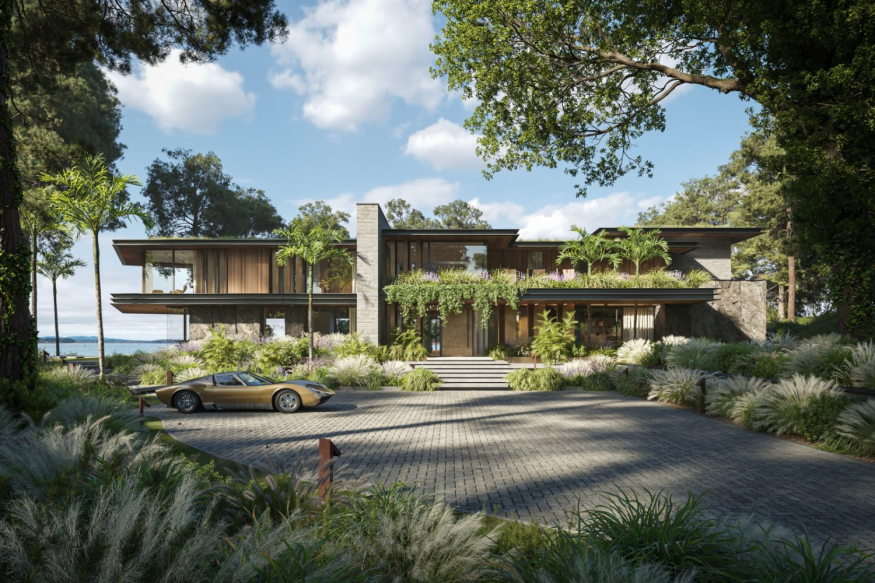Marlow Architects Challenges BCP Council Over Refusal of Luxury Home in Sandbanks Conservation Area

A recent conflict between local planning authorities and architectural vision has resulted in Marlow Architects and the Bournemouth, Christchurch, and Poole Council (BCP) opposing each other's planning application for a luxury new-build home in Sandbanks. The project's design and potential impacts on the Sandbanks Conservation Area have drawn criticism from the council and created controversy regarding replacing an existing cottage. Laurie Marlow, the founder of Marlow Architects, claims that the new design would improve the site and calls the decision a "gross misunderstanding." This article details the disagreement, looking at the council's objections, the architect's point of view, and the implications for the proposed luxury home.
Architectural Vision and Local Opposition
Marlow Architects had envisioned replacing an existing cottage in Panorama Road, Sandbanks, a Dorset neighborhood known as 'Millionaires Row.' The proposed two-story, five-bedroom home was designed for recruitment mogul Tom Glanfield, with plans that embraced the breathtaking sea views and curated a material palette befitting the character of Sandbanks. Laurie Marlow expresses his disappointment with the council's characterization of the design as 'generic,' deeming it a misunderstanding that fails to recognize the project's potential to enhance the site.
Marlow acknowledges the intent to appeal the decision in 2024, emphasizing the careful curation of materials and timeless details incorporated into the Sandbanks design. The clash brings attention to the subjective nature of architectural critique and the challenges architects face when navigating local planning regulations.
Council's Perspective and Planning Refusal
In rejecting the planning application, the BCP Council expressed concerns about demolishing the current cottage, citing it as a "non-designated heritage asset" that would "significantly harm" the Sandbanks Conservation Area. Although 'exceptional' design quality replacement structures are permitted by planning rules, council officers considered Marlow's design 'rather generic' and 'boxy,' claiming that it would not satisfy the exceptional design requirements. The objection also highlighted possible incongruity with the existing Panorama Road Edwardian villas.
Questioning the council's rationale, Marlow contends that the existing property, described as a 'positive contributor' to the area, lacks architectural merit and makes no positive contribution to the site. The disagreement reveals architects' challenges when balancing modern design aesthetics with historical preservation in affluent neighborhoods.
Client's Perspective and Environmental Considerations
Tom Glanfield, who acquired the site for a reported £13.5 million, expresses his disappointment with the council's decision, noting the positive reception from locals. Glanfield emphasizes his commitment to improving the site's ecology and sea wall perimeter, addressing safety concerns in its current state. The proposed design, described as a personal vision, aligns with Glanfield's eco-friendly redevelopment goals, aiming to rectify the alleged defects of the existing property.
In addition to design objections, council officers questioned why Glanfield couldn't repair the sea wall without replacing the entire property, suggesting that alternative options involving the retention of the cottage could have been explored. This raises broader questions about the balance between preserving historical structures and implementing eco-friendly improvements in high-value real estate developments.
The clash between Marlow Architects and BCP Council over the luxury new-build home in Sandbanks underscores the challenges inherent in balancing architectural innovation with local preservation concerns. As Marlow Architects prepares to appeal the planning refusal, the case highlights the subjective nature of design assessments and the complex interplay between architectural vision, local regulations, and community expectations. The outcome of this dispute will likely have broader implications for the future of architectural development in affluent neighborhoods, navigating the delicate balance between modernity and historical preservation.
Related Article : Susana Simonpietri's Guide to Organizing and Designing a Child's Room
From Digital Models to 3D-Printed Homes: Jaspreet Kaur Lall Explains How the Innovation Changes the Construction Industry

Future Belongs to Green Construction: Sampath Kumar Paspunoori Explains One of the Key Trends in the Construction Industry

Kamala Harris' Campaign Ad Uses Iconic Visuals from Carrie Mae Weems to Connect with Voters

Historic Ancient Roman Ruins in Baalbek Remain Strong After Israeli Air Strikes; Locals Seek Cultural Protection

4 Ways to Honor Departed Loved Ones in Your Home Design













